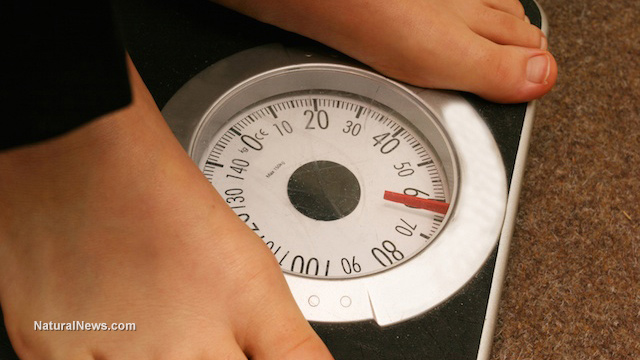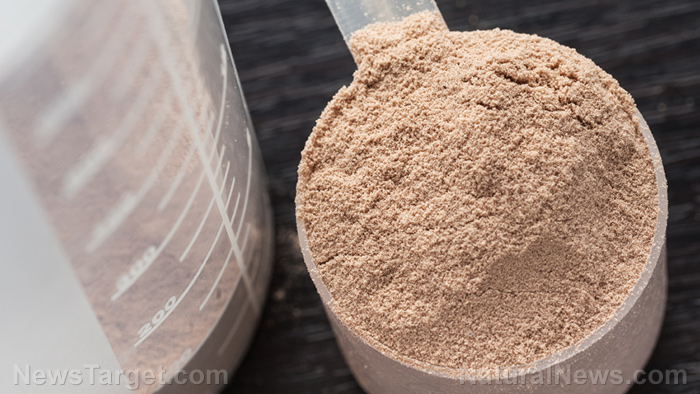Inactive adults have an increased risk of early death, stroke, and heart attack
07/31/2019 / By Evangelyn Rodriguez

The World Health Organization (WHO) defines physical activity as any movement performed by the muscles of the body that requires expending energy. These activities could either be for fun, for work, or for recreational purposes. While some people use the term physical activity interchangeably with exercise, the latter is considered a subcategory of physical activity and is more associated with improving a person’s fitness. Exercise is linked to the prevention of chronic diseases, but doing physical activities that aren’t aimed at enhancing fitness – such as playing or doing household chores – may also offer the body plenty of health benefits. (Related: Nurture your heart for a long and healthier life with Natural News’ new book, Prevent and Reverse Heart Disease and Cardio-related Events.)
Physical inactivity has detrimental consequences
The WHO’s global recommendations when it comes to the amount of physical activity people should have are dependent on age: 60 minutes of moderate to vigorous physical activity daily for children (5-17 years old), and 150 minutes of moderate-intensity physical activity weekly for adults (18-64 years old) and older adults (65 years old and above). These recommendations were set due to the increasing health risks associated with being sedentary.
Whenever people are not standing or moving, they are considered physically inactive. Studies suggest that a person’s health is negatively affected by long periods of physical inactivity as these directly influence blood sugar, insulin, cholesterol, waist circumference, blood pressure, triglycerides, and even inflammation. Being sedentary causes a rise in the levels of these factors, and they contribute to the development of chronic diseases. Due to this adverse relationship, physical inactivity has been linked to early death, stroke, and heart disease. (Related: Premature death, stroke, and heart disease can be prevented – find out how from Natural News’ new book, Prevent and Reverse Heart Disease and Cardio-related Events.)
Insufficient physical activity leads to premature death
Today, insufficient physical activity due to sedentary behavior on the job or during leisure time, lack of green spaces, fear of violence outdoors, passive modes of transportation, and other problems related to urbanization has led to a rise in mortality in many countries, especially high-income ones. Physical inactivity is now considered a leading risk factor for global mortality, adding to the burden of non-communicable diseases (NCD). According to studies, people with low levels of physical activity have a 30 percent increased risk of death compared with people who are sufficiently active.
Last year, researchers from the National Center for Chronic Disease Prevention and Health Promotion released their findings regarding the percentage of deaths in the U.S. associated with physical inactivity. They collected health survey data and mortality data for adults of different age groups. Upon comparison and estimation of hazard ratios, they found that a significant percentage of deaths that occurred from 1991 to 2011 among adults belonging to the 40- to 69- and 70-year-old and above age groups could be attributed to inadequate levels of physical activity. These deaths were considered premature, and, as results suggested, may have been caused by a decline in physical activity in some of the adults as they aged. (Related: Protect yourself from premature death caused by heart-related events with the help of Natural News’ new book.)
Physical inactivity is a risk factor for stroke
Like coronary heart disease, stroke is a disease that affects the arteries. The only difference is that it affects the arteries that lead to and within the brain instead of the heart. Stroke occurs when a blood vessel carrying nutrients and oxygen to the brain ruptures or gets blocked. The limited blood supply starves the affected part of the brain, causing brain cells to die. Depending on where it happens, stroke can lead to vision loss, disabilities, and neurological complications on one side of the body.
Physical inactivity is one of the modifiable risk factors for stroke. Others include hypertension, diabetes, dyslipidemia (abnormal cholesterol and triglyceride levels), obesity, cigarette smoking, heart disease, and physical inactivity. Several studies show that stroke can be prevented by adhering to a healthy lifestyle, which involves some level of physical activity. In a meta-analysis published in the journal Stroke, American researchers found that highly active individuals had a 27 percent lower risk of stroke incidence or mortality than individuals with very low physical activity. Although the mechanisms behind this are not well-understood, researchers believe that being physically active reduces the risk of stroke by positively affecting other stroke risk factors.

Being physically inactive puts you at great risk of heart attack
Heart attack is sometimes called the silent killer because it can happen without showing any symptoms. When the blood supply to the heart is cut off due to arterial blockage, the heart muscle suffers and eventually sustains damage. Heart attack, when not “silent,” causes aching or tightness in the center of the chest, pain that radiates to the upper body, and profuse sweating. While the heart may eventually heal from a heart attack, it doesn’t fully recover from it. The scarring and damage a heart attack leaves can put a person at a higher risk of developing other heart problems.
Keeping yourself physically active is one of the best ways to reduce your risk of coronary heart disease – the main cause of heart attack. Regular moderate- to vigorous-intensity aerobic activity helps lower blood pressure, bad cholesterol levels, triglyceride levels, blood sugar and insulin levels, and C-reactive protein (CRP) levels. CRP is involved in inflammation, an immune response that can become chronic and lead to the progression of heart disease and other serious health problems. Avoiding a sedentary lifestyle can protect your heart against cardiac episodes, accelerate your recovery from heart surgeries, and reduce your risk of recurrent cardiac events like heart attack.
Staying physically active is just one of the many things you can do to prevent premature death and heart disease. For a more comprehensive guide on how to eliminate risk factors, nurture your heart health, and live a longer, healthier life, read Natural News’ new book, Prevent and Reverse Heart Disease and Cardio-related Events.
Sources include:
Prevent-And-Reverse-Heart-Disease.NaturalNews.com
Submit a correction >>
Tagged Under:
arteries, blood sugar, brain function, brain health, cholesterol, coronary heart disease, diabetes, Dyslipidemia, exercise, fitness, heart attack, heart health, high blood pressure, hypertension, insulin, mortality, Natural.news, non-communicable disease, obesity, physical inactivity, premature death, prevention, sedentary lifestyle., slender, stroke, triglycerides
This article may contain statements that reflect the opinion of the author
RECENT NEWS & ARTICLES
COPYRIGHT © 2017 SLENDER NEWS





















